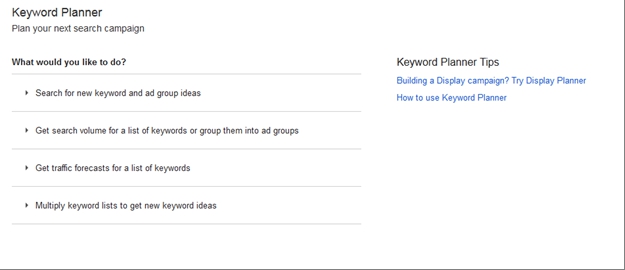Recently NASA updated the famous pillars of creation image taken by the Hubble telescope to commemorate the instrument’s 25th year in orbit. The image is of the Eagle Nebula, or Messier 16 and shows ghost-like clouds of gas and dust, bathed in the blazing light from a cluster of newborn stars. It’s a breathtaking and humbling image both for the technical achievement and subject. This picture is of an area of space about 7000 light years from Earth with the largest ‘pillar’ being about 9 light years across.

Source: http://www.nasa.gov/content/goddard/hubble-goes-high-definition-to-revisit-iconic-pillars-of-creation/#.VL5smS6MiR6
In a shameless bid to be featured in Private Eye’s Desperate Marketing column (please feel free to submit us – you could win £10) we would like to break the massive and multidisciplinary subject of SEO (search engine optimisation) into four main pillars of our own: research, technical, creative and outreach.
Research
You need to know how people are finding your site and what people are typing into search engines to find the services or products that you offer.
There are some excellent tools available both free and paid that will help you understand how your website users search the web. Once you know this you can make informed decisions about the structure of your website and the content. Using the right keywords for content, headings, menus and tags will help boost your website’s search engine ranking.
Available tools
There are lots of tools available for keyword research with the most popular being Google’s keyword planner www.google.com/sktool. You’ll need a Google account to access this (sign or create one in the top right) and enter a list of keywords that new customers might use to find you.
You can use this tool by clicking ‘Search for new keyword and group ideas’ and supplying a list of ten or so keywords that you think that new customers might type in to a search engine. The tool will come back with alternatives and monthly search volumes so you can check for any seasonality or trends..
There is another free tool, the appropriately titled Keyword Tool – http://keywordtool.io/ which does a similar job in generating groups of keyword ideas.
Finally there are some paid services although these are probably more for SEO professionals:
- Moz’s keyword difficulty tool for a comprehensive view on why a particular URL might rank higher than another – http://moz.com/tools/keyword-difficulty
- Stat for keyword search volumes combined with daily updates – http://getstat.com/
- Searchmetrics essentials which enables you to analyse search visibility for any site – http://www.searchmetrics.com/shop/essentials/
Once you have your keyword research data you can map out your pages and use this to help you draft your website content and structure.
search engines will rank fast loading websites with up-to-date links higher than websites with technical problems
Technical
Your website needs to work efficiently so technical issues including website speed, page size, server errors and broken links all affect how your website ranks. Usually Google and other search engines will rank fast loading websites with up-to-date links higher than websites with technical problems.
One of the best tool for checking for problems is Google’s webmaster tools. This gives reports and alerts on Page Not Found errors, server errors and other issues that may downgrade your website.
You’ll need a Google account, but you can access it here – https://www.google.com/webmasters/tools/home?hl=en – It’s relatively easy to add your website and review the information. Microsoft’s Bing search engine has a similar tool – http://www.bing.com/toolbox/webmaster
You can also download and install Add-ons for your Browser which give live reports on important SEO factors. Particular favourites of ours are Woorank for FireFox – https://addons.mozilla.org/en-US/firefox/user/woorankcom/ and Open SEO Stats for Chrome (search for this in the Google Chrome store).
You can also use this broken links checker – http://validator.w3.org/checklink for a quick overview of broken links on your website.
Regular maintenance
One ongoing task of SEO is to improve the site speed as this is an important ranking factor: slower sites will generally rank lower than fast loading sites. Most good content managements systems will have plugins that cache standard pages so the website displays quicker.
Check your website here – Google site speed https://developers.google.com/speed/pagespeed/insights/ or – Pingdom http://tools.pingdom.com/fpt/. Both services are free and offer good suggestions for improvement areas.
Website structure
Make sure your website URLs are descriptive, short as possible and avoid symbols and special characters. Also create an XML sitemap – https://support.google.com/webmasters/answer/183668?hl=en – using an online tool like this https://www.xml-sitemaps.com/. Then upload this to the root folder of your website and submit the URL to Webmaster tools so you actively tell the search engines the location of your important pages.
If you use WordPress then a plugin like Yoast will make the process very straightforward.
There may be some folders on your website that you don’t want indexing such as test folders, file storage areas etc. A simple text file called robots.txt can tell search engines which folders and file types to avoid, although take care with this as a poorly written robots.txt file can block search engines from visiting your website – see http://www.robotstxt.org/ for more information.
You can also add enhanced information which doesn’t display on your page but is read by search engines using the search engine developed schema.org markup (https://schema.org/).
Mobile and responsive web design
The rise of smartphones and tablets means that your website needs to cater for different devices properly. If your mobile content is served using an app or some other separate content then ensure that the header information responds with Vary: user-agent to avoid confusing the search engines.
Links – good links and bad links
Links back to your website from reputable, quality websites can boost your website ranking. However the later updates to the Google algorithm actively downgrades websites with links from low reputation websites. It therefore pays to keep an eye on your links.
Useful tools for doing this are Google Webmaster Tools – https://www.google.com/webmasters/tools/home?hl=en – and Majestic SEO – https://majestic.com/
If you do find an undesirable link you can request a ‘disavow’ through Webmaster Tools – https://www.google.com/webmasters/tools/disavow-links-main – use with care!
You can only manage what you can measure
Although there are other stats packages, Google Analytics is free, easy to install and provides good overview information, plus lots of depth if you’re interested in really understanding how people are using your website.
When you get the chance you should migrate to Universal Analytics as it provides a visit rather than user oriented overview which provides more controls and better information long term.
Creative
The principle is to build compelling content that people are willing to share, discuss and get in touch.
- Build attractive, useful, link-worthy pages – Your website content should inform, solve a problem for a user or add something of value.
- Review your competition – are they doing something you should or are they missing something important that you can do or emulate.
- Define a content strategy – use all the user information you have available about how you should approach adding content and what is popular. Use a service like Buzzsumo – http://buzzsumo.com/ – to detect what is being shared and what are the most popular pages.
Outreach
You take every opportunity to share knowledge and speak to other people involved in marketing, SEO and promoting a business as people are surprisingly willing to share best practice and what’s worked for them – pandering to someone’s ego does work and you can glean valuable information from stories of success and failure.
For example if you have a twitter account and other social media then a quick way gathering followers is to share or retweet content from an organisation or individual that could follow you.
SEO = Have great content and tell people about it!
A final word
SEO or Search Engine Optimisation spans many disciplines and requires both technical and creative input. However it can be boiled down into one simple statement: Have great content and tell people about it!






